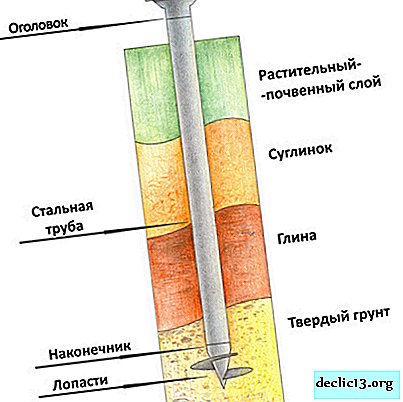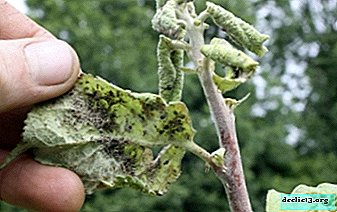How to clean the microwave inside of fat

Many housewives have no idea how to clean old fat inside the microwave. A complete cleaning of the "entrails" of a snow-white pet will not take more than 15 minutes at home, if you know how to correctly approach the procedure.
The microwave oven has long and firmly established itself in the kitchen space of every housewife. This smart and compact technology warms up ready-made meals, saving you time and precious time.
This is a real rival to the household cooker: depending on the available functionality, it cooks, bakes, cooks food on the grill. At the same time, time costs are reduced several times. No wonder using a microwave has become a daily ritual.
Safety precautions
- Unplug the device from the outlet before using liquid products.
- Metal brushes and abrasive products cannot be used to clean the enameled surface: this will damage the enamel.
- The use of water during cleaning should be minimal: there is a risk of filling the vital parts of the microwave.
- Do not disassemble the electrical appliance yourself, even if it is likely that contaminants have entered. Use the services of specialized services, which is much more reliable and safer.
- Do not experiment with household chemicals unless they are designed to clean the microwave. This can harm you and household appliances.
Effective folk remedies

Cleanliness in the house is a labor-intensive process that requires a lot of time and money. Significantly facilitate the process of modern products of the chemical industry, but many prefer time-tested "grandmother" recipes. They work no less efficiently, but cheaper and more environmentally friendly.
Lemon acid
A great way to clean household appliances. It is possible to replace citric acid with fresh lemon or other citrus. Citric acid neutralizes bad odors well, but often you should not resort to its help: with regular use, the acid destroys the enamel.
For cleaning you will need:
- 0.5 l of water;
- 1 tbsp. l citric acid (or 4 tbsp. l. citrus juice).
After mixing water and citric acid in a container, put it in the microwave. Depending on the degree of contamination, set the timer for 2-5 minutes. Then, for greater efficiency, wait another 10 minutes. After the procedure, the fat and the burn can be easily removed with a soft sponge.
Video tipsVinegar
A wonderful tool that will help in the fight even with severe pollution. It is not recommended to be used constantly, otherwise housewives risk the beauty and integrity of the enameled coating. The disadvantages of the method include the smell: it is very caustic, while cleaning, open the windows in the room.
To cleanse you will need:
- 0.5 l of water;
- 2 tbsp. l 9% vinegar.
In a deep container, combine vinegar with water. Put the solution in the microwave for 3-5 minutes (depending on the degree of contamination) and turn on the mode to maximum. At this time, fumes work for the hostess and vinegar vapors soften old fat. After the timer is notified of the end of operation, leave the device closed for another two minutes. After this, the dirt can easily be removed with a simple soft sponge. Then clean again with water, removing residual vinegar from the walls.
Soda
Baking soda, worth a penny, replaces many expensive products. Soda condensate has proven itself as a fat cleanser, but heavy contamination of soda is not on the shoulder. The product will gently clean the surface of small and medium spots without damaging the enamel.
For work you will need:
- 0.5 l of water;
- 1 tbsp. l baking soda.
Dissolve soda in a bowl of water, then put in the microwave for 3-5 minutes and turn on at maximum power. During this time, soda forms condensate, which will soften fat and burn. After turning off the appliance, wait another 2 minutes, then remove the fat with a damp soft cloth.
If somewhere the stain does not rub off, soda will come to the rescue: pour a small pinch on a rag and remove the dirt. Remember, baking soda has an abrasive structure and can leave small scratches on a glossy stainless surface.
Purchased products and chemistry

Chemical industry products are firmly established on the shelves of every home: in a matter of minutes they clean any surfaces from pollution, returning objects to their former luster and pristine whiteness.
There is also a special chemistry for cleaning microwaves, but if there are none at hand, others who will always find in the arsenal of housewives are also suitable. It is important to take into account their consistency and structure - abrasive substances will not bring enamel benefits. A detailed description of the options we consider in the table.
| Means | Dosage | Mode of application |
|---|---|---|
| Dishwashing liquid | 0.5 tsp | Apply a drop of the product to a soft, damp sponge, foam and place in the microwave for 30 seconds. Wash the softened dirt with the same sponge, remove the remaining product with clean water. |
| Wiper |
| Prepare a solution of the ingredients. Apply to a soft sponge and use it to remove dirt inside and outside the microwave. |
| Fat Removal Sprays | 1 tbsp. l | Most often, such products are sold with a spray gun on the packaging. Just a few taps are enough to completely clean the inside of the product. Remember to rinse the cleaning agent with plain water. |
| Fat Removal Gels | 1 tsp | The grease remover gel can handle the most difficult spots. Using a soft sponge, apply evenly to the surface. If the stains are strong, leave the gel for 1-2 minutes. Rinse thoroughly with water. |
| Laundry soap | 1 tbsp. l soap shavings | Dissolve the soap in a bowl of warm water, place in the oven for 2-3 minutes at maximum power. After the time with the same solution, thoroughly wipe the walls of the device until all dirt is removed. Clean the microwave from soap residue with clean water. |
Useful Tips
- Contamination is easier to prevent than to eliminate: use special covers when working with the microwave. You can replace them with plastic bags or baking paper.
- Allocate 1 day per month to clean the inside of the microwave. This will help to avoid a large accumulation of fat on the walls, and will make the process of cooking and heating food more hygienic.
- Do not rush to close the microwave door after use, let it stand for two or three minutes open: during this time, the smell of food will disappear, and the resulting steam will dry out.
- Ideally, remove contamination after every cooking if drops of fat get on the walls.
Regular microwave cleanliness will reduce time and effort during general cleaning and extend the joy of using this helpful housework. And the cleanliness of the inner surface is the key to health!

















